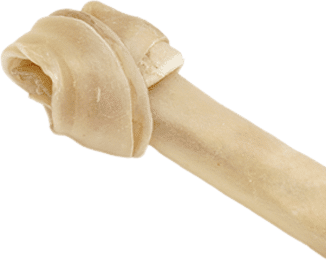


When you mix two dog breeds to make a new one, you might choose traits from two of the most intelligent and most lovable breeds—that’s precisely where the Labradoodle comes in.
With Labradors ranking number one as America’s favorite dog and Poodles are the sixth-most favorite, there’s no question why Labradoodles are the top hybrid dog in the United States.
Labradoodles and Labradors are winning America’s hearts, and both breeds are beloved. They’re ideal for families, first-time dog owners, or anyone who wants to add a loving, energetic, loyal, and intelligent dog to their family. Both breeds are popular choices as working dogs, and their friendly demeanors and trainability also make them great therapy dogs.
So, if they’re both equally as popular, which wins – the Labradoodle or a Labrador Retriever? It’s time to research the difference between these two popular breeds to know which is right for you.
Labradors are a purebred dog breed, while the Labradoodle breed is a genetic hybrid of two purebred breeds: Labradors and Poodles. Both of these dogs are intelligent and loyal, so it makes sense why this hybrid dog breed was created: With the right cross of parents, an excellent outcome was almost guaranteed.
Labradoodles were bred in 1989 by a man named Wally Conron, the head of the breeding program for the Royal Guide Dogs Association in Australia. He was assigned to generate a hypoallergenic guide dog with a winning personality for a blind woman whose husband was allergic to dog hair.
So, the Poodle, a hypoallergenic dog that hardly ever sheds, was bred with the Labrador, a classic guide dog—and the Labradoodle was born.
Labradors have a history that goes back farther – they were originally bred in the 1800s by fishermen in Newfoundland. These fishermen combined a local dog, the St. John’s Water Dog, with local Newfoundland dogs to create a new breed with a water-repellent coat and excellent sporting abilities to help fishers fetch game while out on the water.
These dogs quickly gained popularity, and so the English colonists transported them to the United Kingdom before they were then popularized in the United States some years later.
If you ask a Labrador owner which breed beats out which, their opinion will be unanimous: Labradors are the best. Of course, Labradoodles feel just as passionate about their pooches.
So, the bottom line is that you’ll never get an unbiased answer by asking existing owners of these great breeds. That’s why you should do your research before making the leap.
While it’s evident by their initial appearance that Labradors and Labradoodles look different, there’s a lot more to uncover under all that fur. Regarding their personalities, health, grooming needs, and other important aspects of dog ownership, some differences may lean more towards your personal preference.
Learn all you need to know about the differences between Labradors and Labradoodles below.
Labradors and Labradoodles may have similar personalities, but they couldn’t look any more different. Labradors are almost unmistakable in appearance: Their stockier, larger build is complete with a thick coat that is long, straight, and coarse in texture.
They typically only come in AKC-recognized coat colors: Yellow, brown, and black. There are also Labs with red coats but, technically, they’re classified as “yellow.”
On the other hand, Labradoodles often get mistaken for their cousin, the Goldendoodle (a combination of Golden Retrievers and Poodles). Because of their longer, softer, and curlier hair and more petite, elegant body, Labradoodles look pretty different from their close cousin, the Labrador.
Labradoodles also have a more comprehensive range of coat colors and types, colors, with acceptable coats being yellow, brown, black, blonde, charcoal, and apricot. Some Labradoodles also have multi-colored coats with different patterns, which come from variations in the poodle’s coat!
Unlike Labradoodles, all purebred Labradors—no matter their parents or genetic makeup—grow up to be a standard size. They will typically weigh between 55 and 80 pounds, with females weighing less and males weighing more.
On the other hand, Labradoodles can vary significantly in size depending on the parents’ size. That’s because there are three types of Labradoodles which are mini, medium, and standard. Keep in mind that the size ultimately depends on the size of the poodles used:
Typically, a standard Labradoodle will be slightly smaller than a purebred Labrador, so if you prefer a smaller dog in size, then Labradoodles may be perfect for you. However, if you like the sturdiness and energetic gait of a Labrador, then Labs might be for you instead.
Getting to know your breed of choice’s temperament and personality is essential. These two aspects of a dog’s breed will help determine how they’ll react in certain situations like meeting strangers and new animals, training, responding to fearful situations, and other everyday scenarios.
The good news: Both Labradors and Labradoodles have great personalities. After all, there’s a reason Labradors and Poodles are part of the Labradoodle’s genetic makeup. They’re both loyal, friendly, and intelligent breeds. So, producing an heir of the mix will increase the likelihood of excellent temperament.
Labradors are a sporting breed, so they’re well-rounded companions with an eager, yet docile, temperament and a friendly, active, and outgoing personality. They are favorite family pets, are good with children, and are almost always friendly with other dogs, as long as they undergo training.
Poodles belong to the non-sporting group: A diverse background made up of very different breeds of dogs. Some of the most common characteristics shared across the breed are active, smart, and affectionate. They are good with children and sometimes good with other dogs.
With this and a Labrador’s personality in mind, a Labradoodle temperament is an admired one: This hybrid breed almost always guarantees an intelligent, affectionate, elegant, and curious personality.
Labradors and Poodles are among the most intelligent and trainable breeds in the world. So as you might expect, Labradoodles are some of the most intelligent hybrid dogs thanks to their genetic ties to Labradors and Poodles.
Both breeds are among the Top 10 Smartest Dog Breeds, where Poodles are ranked #2 and Labradors are ranked #7. The Labradoodle takes important qualities from both genetic ancestors, where Labradors have a natural, intuitive IQ, and Poodles are observant and quick to learn.
However, since Labradoodles are so intelligent, they need to be mentally and physically stimulated. If they aren’t, they could become destructive and difficult to train and handle. So, while Labradoodles are extremely smart, they require a certain level of mental stimulation, whereas Labradors may need less stimulation.
Poodles are a well-favored breed for their short, curly coat that hardly ever sheds, making them one of the best hypoallergenic dogs in the world.
But although Labradoodles were bred explicitly for those who are allergic to dogs, the other parent breed, the Labrador, is not hypoallergenic. That’s because Labradors have unique double-coats that result in a lot of shedding.
All dogs shed to some extent, but the Labradors’ special double-coat sheds heavily twice a year at the turn of the seasons—spring and fall.
In spring, the Labrador loses the winter coat for the warmer months. And in the fall, they grow a thicker coat for the cold weather ahead. Between these two significant sheds, they require plenty of brushing and grooming throughout the year.
However, the same can’t be said for Labradoodles: Labradoodles can be hypoallergenic and those who suffer from pet dander allergies, often consider this breed. However, Labradoodles are mixes so this isn’t a guarantee.
However, there are three types of Labradoodles you may want to choose from if allergies are a concern:
Generally, F2 Labradoodles tend to be best for those who suffer from allergies, as they’re more Poodle than Labrador. However, F2s are more prone to genetic health problems than F1s.
Labradoodles are social, calm, and loyal dogs, so they’re straightforward to train from the get-go. During puppyhood and young adolescence, they are more than willing to please people around them, and once you establish a relationship, they are great listeners.
This easy-going aspect of the Labradoodle’s personality comes from the Labrador, since sometimes Poodles can be wary or standoffish at first.
Labradors are highly trainable and often recommended for first-time dog owners. However, it’s good to note that they’re very food-motivated and require regular exercise, so training sessions should be active and hands-on.
Both the Labrador and Labradoodle dog breeds are considered energetic dogs which means that they need to be physically and mentally stimulated to avoid whining, anxiety, and destructive behaviors. Both breed types need heavy socialization from an early age to further prevent behavioral problems.
Labradors and Labradoodles need around the same amount of daily exercise, with adult Labradors needing at least 60 minutes. Labradoodles need a range of 30 to 120 minutes which averages 60 minutes. Exercise can include jogs, two long walks, playing in the yard, or a mix of all three. Keep in mind that these are just averages and what your dog need may differ based on age, size, and temperament.
Any dog owner’s priority is to ensure that their dogs remain healthy throughout their lives. So, before you adopt a dog, you should be aware of the breeds’ different health concerns.
Both Labradors and Labradoodles are large-breed dogs, meaning their life expectancy is typically a couple of years shorter than smaller breeds.
A healthy Labrador may have a life expectancy between 10 and 12 years, with 11 years being average. Similarly, a healthy Labradoodle will typically live between 12 and 14 years, with an average of 13 years.
Some common health conditions that may affect Labrador Retrievers are joint issues like:
Some common health conditions that may afflict the Labradoodle hybrid breed are issues that affect both Labradors and Poodles, such as:
As you might guess, many factors might determine the price of a dog, such as:
The average price of a purebred Labrador puppy is between $400 to $1,500. Some breeders also offer training programs that factor into the total cost so that you could have a fully-trained puppy on its first day home.
On the other hand, Labradoodles average between $1,200 and $3,000. Prices are higher because they’re considered a “designer breed.” It doesn’t hurt, of course, that both Labradors and Poodles are highly sought-after.
The overall cost of puppies from a breeder includes their care before and after their birth. These puppies are carefully bred, taken care of, fed a specific diet, exercised, and socialized daily for the first eight weeks of their lives until they go into their new families’ homes.
Since Labradoodles were explicitly bred to satisfy dog lovers with an unfortunate pet dander allergy, they are praised for their hypoallergenic coats. So if you have allergies, you don’t have to live a pet-free life—a doodle could be a great option because of its potential for a hypoallergenic coat. Of course, with mixes, it’s still possible to have a Labrador-type coat.
Labradors are the most popular dog in America. But, their price tag doesn’t reflect that: A purebred Labrador from a trusted breeder will be significantly less expensive than a Labradoodle. Labradoodles are a mix of two popular breeds, so it makes sense that their price tags are generally twice the cost.
This is not to say that Labradoodles aren’t also excellent family dogs—because they are. But, since their Poodle parent can be a little wary and standoffish of strangers and unfamiliar animals, Labradors take the cake for being the best all-around family pets.
They are welcoming, curious, and friendly with just about everybody. However, it’s essential to enforce socialization from a young age to ensure that your Labrador grows into a confident and happy adult.
Everybody has their preferences regarding the types of dogs they like, and a significant factor that you should consider is their adult size. Think about your living situation and ask yourself: How big is too big?
While Labradors can weigh up to 80 pounds in adulthood, and they grow to between 22 to 24 inches tall, choosing a doodle is tricky because their size can be unpredictable. Regardless of the size of the poodle, they’re still a mix, and there are plenty of Labradoodles that are well over 85 pounds because of the genetic stockiness of a Labrador and the height of a poodle.
That’s why, as far as size is concerned, choosing a Labrador over a Labradoodle is best because you can predict how big they’ll get.
There’s a reason why Labradors and Labradoodles are among the most popular dogs in the United States, and it’s because of their incredible personalities. No matter which breed you choose to add to your family, you’re sure to be in for a lifetime full of happiness, unconditional love, and companionship.
When it comes to America’s favorite purebred dog and America’s favorite hybrid dog, the Labrador Retriever and Labradoodle are nose-to-nose. So, which of these two dog breeds is better? There is no single answer: It all comes down to your preference and lifestyle.
If you’re allergic to dander or prefer a smaller dog but still love Labradors’ personality, then a Labradoodle is a better breed for you. Or, if you prefer a classic breed that has been highly praised as the ultimate family pet for the past 30 years, then you can’t go wrong with the Labrador.
Whether you’re on the fence between these two unique breeds or simply just wanted to learn about the differences between them, you can’t go wrong with either. Both have their own sets of benefits and drawbacks depending on what you’re looking for.
However, there is a reason that Labradors are America’s favorite dog. So if your heart is set on Labradors, you can check out the available Labrador puppies from Snowy Pines, a group of reputable breeders that are American Kennel Club-certified with decades of experience.
At Snowy Pines, every puppy is born and raised at our home in the Ozark Mountains, where we welcome visitors anytime. Learn more about Snowy Pines and our Labradors today.